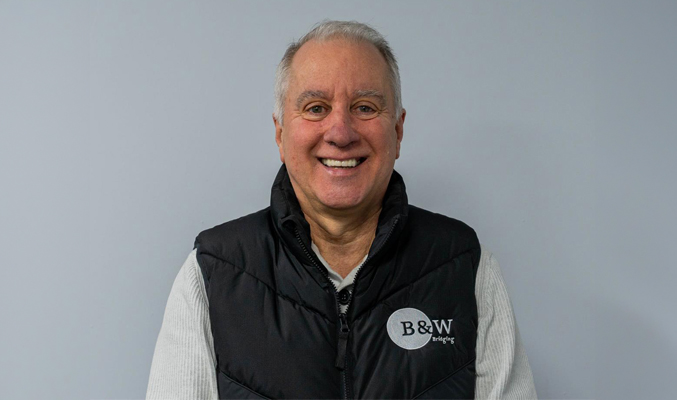‘I enjoy the look on their faces when they find out I’m not the office junior’
By Laura Miller

Work can be a pain. Even those of us lucky enough to have chosen and love our particular career are mainly just trying not to accidentally burn down the building, metaphorically speaking, sometimes literally. But what if, on top of having to type “as per my previous email” 29 times a day with the accompanying RSI from internal eye rolling, you had to adapt to an environment where the working assumption is you could not possibly be the boss?
“I attend many meetings with high-ranking senior members of large global companies and more often than I would like upon entering the board room it is assumed I am not the owner or key decision maker but a junior or administrative staff member,” says Tiba Raja, executive director at London-based bridging lender Market Financial Solutions.
Raja suffers the lazy condescension with characteristic good humour, the kind women still too often need to make it in traditionally male professions like finance, along with elephant-thick skin. “After introducing myself, I enjoy seeing the look on their faces,” she says. But it must be galling for someone whose CV, spanning a 19 year career in finance, boasts some of the biggest names in the City; Aviva, HSBC, Goldman Sachs.
Cast your eye on the comments section of any article on sex-based gaps in pay or promotion and you will quickly see a propensity among some (usually but not exclusively) male commentators to bemoan the glut of ‘diversity’ conversations like this one. So let me tell you a secret – women are very tired of it too. Life is hard enough without having to be a constant flag bearer for equality of access and opportunity. But it’s common among those who have ‘made it’ to take on that role, because alas there is still more to do to make it easier than they’ve had it for those who follow.
“I would like to believe the more strong, diverse women they encounter, the less pre-conceived notions [those high-ranking global company directors] will possess going forward,” says Raja – “broadening mindsets of people at any level or age is vital”.
With effort, things are getting better. Female representation on boards has increased 39 per cent since 2016, the five-year review of the government’s Women in Finance Charter found. Women were a third of board appointments in the sample 200 financial services firms, up from less than a quarter when the initiative began. Female representation on executive committees has also increased from 14 per cent to 22 per cent.
Yet when, depending on which stats you read, women slightly pip men in world population terms, we’re far from a natural 50:50 power split. Yasmine Chinwala OBE, partner at New Financial and co-author of the Women in Finance Charter review, said: “While female representation is moving in the right direction, there is still a long way to go.”
Representation of Black, Asian and Minority Ethnic (BAME) workers in financial sector management is growing even more slowly. As the London Institute of Banking and Finance points out, in a 2018 report, Paying attention, research firm Randstad found members of the BAME community held fewer than one in ten management jobs in UK financial services.
As a person of Indian heritage, as well as a woman, it is a struggle Raja is all too familiar with. “I have had to make a conscious effort to push myself – you must be more assertive, prove yourself even more to be heard, or to have your opinion counted. Often, people will look at you, or will read your ‘ethnic’ name, and assume you do not have the knowledge or the capability from superficial encounters,” she says.
I spoke to Raja just before the horrific racial abuse meted out to black footballers on the English national team following its knock out in the Euros. Football is literally lionised in Britain, its heroes modern day gladiators, adored and idolised by young and old. When even that status could not protect black players from the most hateful slurs, it creates a chilling effect for people of colour everywhere, . “I answered your questions, then what happened at the football brought it back a little to me, it makes you sad,” says Raja.
It is rare to witness the kind of unsophisticated abuse in the office that Marcus Rashford suffers on social media (with a level of grace that belies his just 23 years). But Raja recalls how opportunities would be passed onto other members of the team before her. Management steering her away from more challenging projects or choosing not to provide “opportunities to try something new, in the same way they would for fellow male or Caucasian colleagues”.
Often hard to prove or even be sure of, the kind of gatekeeping Raja describes can easily be dismissed as oversensitivity. But the data is unequivocal; the Randstad report alone found the UK economy would be £24bn bigger if those from BAME backgrounds progressed in their careers as the same rate as their white colleagues. Global consultancy McKinsey, not typically accused of being ‘woke’, found in 2018 companies in the top 25% for ethnic diversity were a third more likely to achieve above average profit. More ethnically diverse boards were 43% more likely to outperform on profits. Companies in the top 25% for gender diversity were a fifth more likely to achieve profit above the industry average.
“Work environments tend to be more successful with people from various backgrounds generating innovative, creative and different ideas,” Raja points out matter-of-factly. MFS is a case in point. The lender has grown its team by 40 per cent since the start of 2021 in response to increased demand from brokers and private clients, bringing in more business development managers, underwriters, loan managers, analysts and a new financial controller. MFS has had to take on a bigger Mayfair office to accommodate everyone. It has also secured two funding lines worth £350 million this year. “Diversity and inclusion, and all the diverse ideas and outlooks that come with that, is a huge part of why we are so successful as a business,” says Raja.
MFS’s senior management team is currently 62 per cent female, and 42 per cent of the team are also of ethnic minorities. “We work with our recruitment team to make sure they understand our process and our vision for the business as we grow, to make sure we are getting the right candidates for the roles from the very beginning,” she says, a simple yet effective process “that focuses entirely on communication”.
Education and awareness are pushing improvements across the sector, she says, but in her assessment of racial diversity in finance, Raja echoes Chinwala’s review of female representation: “We still have a long way to go”. Corporate diversity attempts have sometimes been accused of tokenism – just having a woman or a person of colour on a panel rather than considering true diversity of opinion based on hearing from people of different life experiences
Raja says that obviously won’t get the results companies want. “It’s important to be clear the person must be fit for the role as a priority and if the recruiter ensures they are bringing in a diverse pool of talent from all backgrounds and areas, then the chance of finding the right fit is far better!” Chinwala also wants companies to go beyond hiring to nurturing ambition: “The next areas of focus is shifting from recruitment activity to building a sustainable pipeline of female talent, cascading accountability from the top throughout the organisation, developing more women in revenue-generating roles and pushing the ambition of targets towards the ultimate charter aim of parity,” she says.
True diversity, believes Raja, is when you value and appreciate each other’s differences and respect them. Achieving this can be especially hard for working mothers. “Many interviewers assume working mothers will try to take off more time and are less inclined to offer them the job,” says Raja, who has two now adult boys, “many who could be perfect for the job but their wings are clipped before they could fly”. She has held roles in finance where “being a mother would automatically mean you cannot stay late so then you would be given less of those extra opportunities”. That in turn meant chances to excel in extra projects or for a promotion were reduced. “Of course, some mums prefer to take on less but many are willing, capable and able to multitask,” says Raja.
Homeworking has often been touted as a catch-all solution to helping working mothers. But the pandemic has revealed some problems with that idea. A study by Nottingham University Business School and the Womens’ Budget Group presented to the Women and Equalities Committee in July 2021 found employed women were doing much more housework, more childcare and more home-schooling than men during the pandemic, often on top of working from home at their jobs. Mothers were far more likely than fathers to have main responsibility for childcare and home-schooling during Covid, exasperating a long-standing problem of chore-sharing.
Unequal rewards for corporate presentism compound the issue. “I have found getting to middle management roles were fairly straightforward, but to get to higher senior positions takes longer than a male colleague,” says Raja, “it’s more challenging to prove worthiness when someone’s ability is determined by hours spent at the desk rather than the output and calibre of the individual”. Companies need to realise working mothers need flexibility, and fathers need to step up; women’s pensions “would gain over £106,000 on average”, for example, if new fathers did half of unpaid care work, recent research from fintech pension company PensionBee found.
Yet Raja also sees the flipside pressure on men. When asked has she ever felt pressure not to fail in case it reflects badly on all women / people of colour / mothers, she is circumspect. “I believe there is always pressure in any job not to fail, whether you are a man or woman. In some cultures, its worse for men. But as a mother who needed to support her family the pressure was huge for me. I needed to work more hours to move up the ranks and take on even more duties to prove my worth – other colleagues did not have to.”
Tiba Raja’s 5 Diversity Do’s
1. Start at the top of management and identify whether they are committed to diversity and inclusion. Without management buying in to making things better, it won’t happen – or it will be a token effort that ultimately will fail.
2. The recruitment process needs to reflect the goal. If the recruiter doesn’t understand the aims, businesses won’t get the diversity of candidates that they need.
3. Integrate diversity into the workplace as a whole. Enable teams to bounce off each other and create positive synergies between all staff to maximise innovation. Actively support, nurture and promote people from different backgrounds. No one should feel like an outsider within their place of work.
4. Networking is definitely important – giving others role models and new contacts that show them that they are not alone, and that other people understand their struggles and points of view.
5. Finally, keep communication lines open, have regular one to one’s and appraisals with your team – focus on the personal as much as the professional. Review what your staff are telling you about their needs. Take action, don’t become stagnant and continue to develop your culture in line with what they tell you.

Laura Miller is a freelance journalist who writes about money and business. She regularly appears in UK national and trade newspapers and magazines, and has previously worked for ITV News and the Telegraph among others. Find her on twitter @thatlaurawrites










You must be logged in to post a comment.